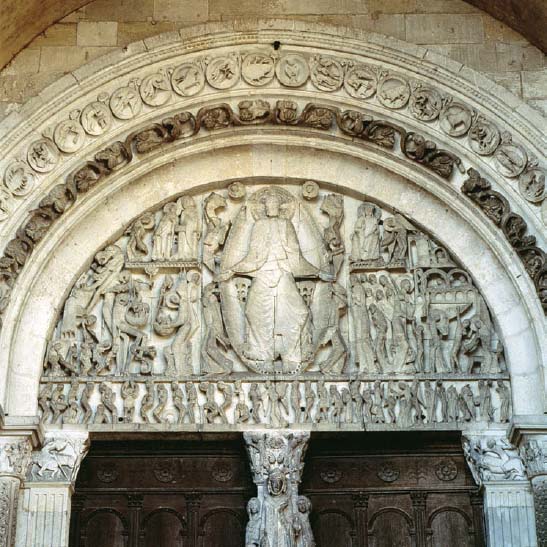The Medieval World, C. 400–1300Gothic Europe |
What is Chartres Cathedral? |
Chartres Cathedral is perhaps the preeminent example of Gothic architecture in the world. Construction began in 1134 about fifty miles southwest of Paris. After a fire in 1194, Chartres was under construction until 1260. The cathedral features intricate relief sculptures depicting the Last Judgment over the west portal (entry doors), monumental stained glass windows, and two mismatched towers (one of which was built in the early sixteenth century). The figurative sculptures on the exterior of Chartres are so life-like, they seem to jostle and look to one another in conversation. Upon entering the building, the arcades appear weightless, the walls soaring, thin, and delicate. Warm, colored light filters into the nave through the rose window where biblical narratives emanate from rich, glass panes. The aim of the Gothic architects of Chartres and other cities in Europe was to make manifest divine light from heaven, and here, it does appear as if they succeeded.

The twelfth century is known as the “Age of Cathedrals” in Europe. Cathedrals such as the magnificent Chartres Cathedral in France often had ornately decorated tympanums, or semi-circular wall areas over doorways and church entrances.
